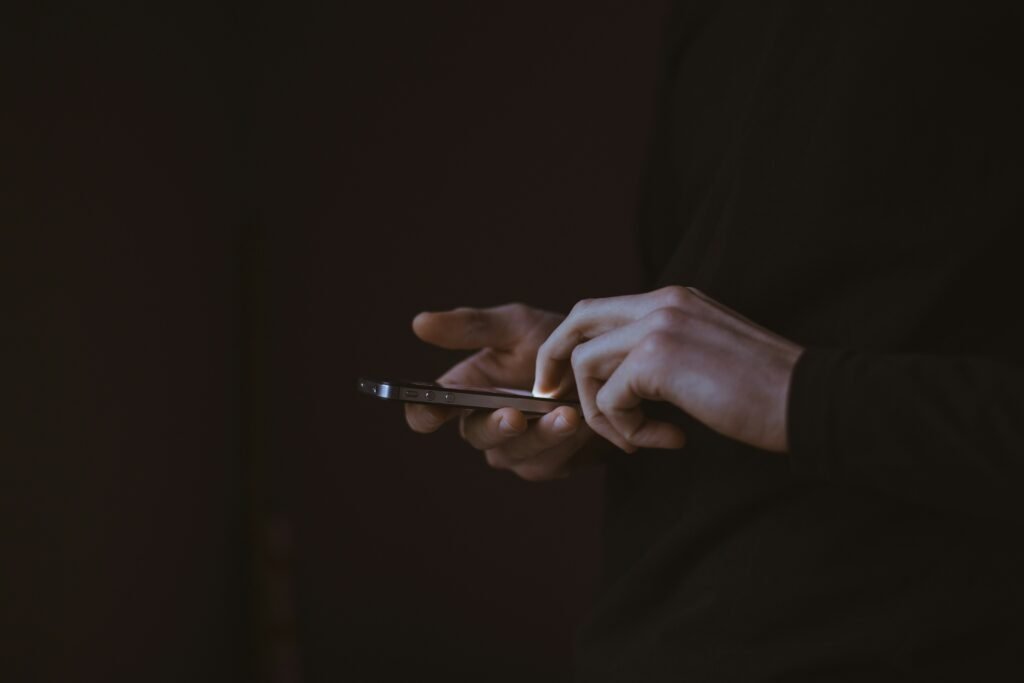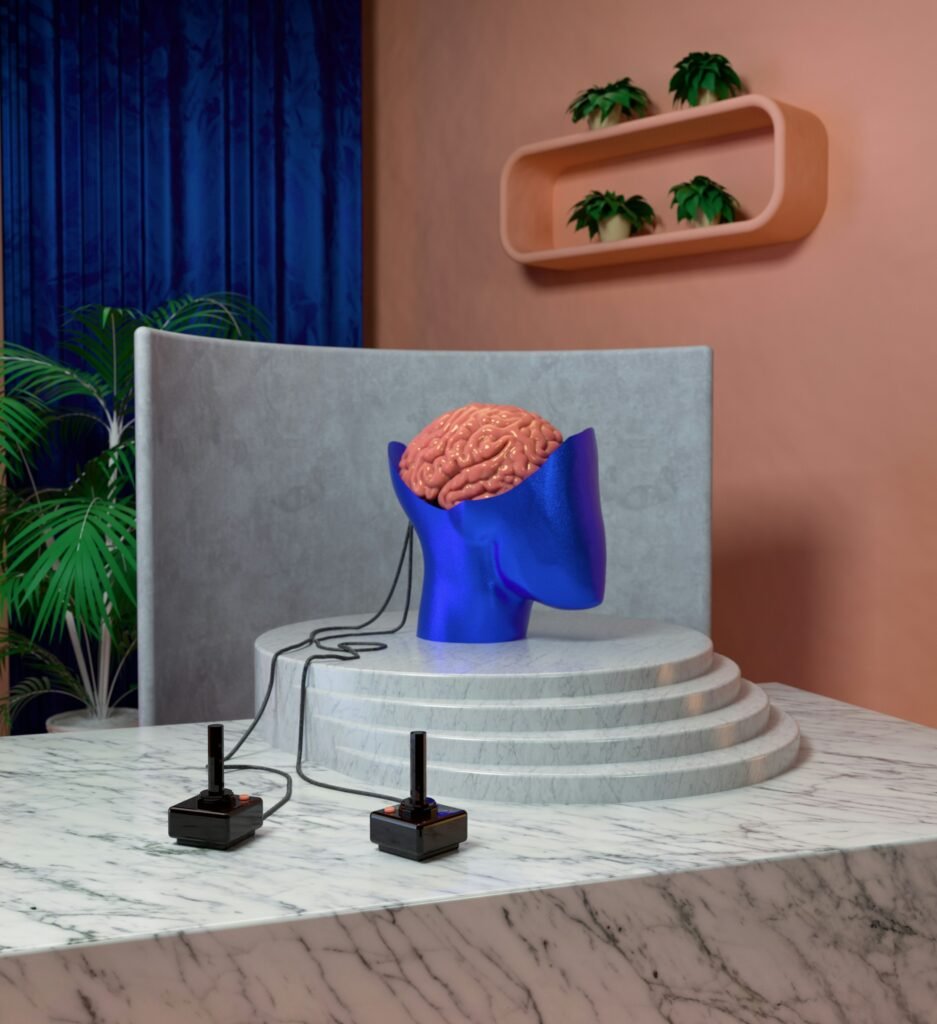In today’s fast-paced and technology-driven world, it’s becoming increasingly important to take a step back from our digital devices and reconnect with ourselves. But how exactly can we do this? This article explores the best practices for digital detox, providing valuable insights and practical tips on how to effectively improve your mental resilience. By implementing these strategies, you can regain control over your relationship with technology and find a healthier balance in your daily life. So, if you’re ready to recharge and reconnect with the world around you, let’s dive into the world of digital detox together!
Why Is Digital Detox Important for Mental Resilience?
In today’s hyperconnected world, our lives revolve around digital devices. While technology has undoubtedly improved our lives in countless ways, excessive digital usage can take a toll on our mental health. This is where digital detox comes in. A digital detox refers to consciously and temporarily disconnecting from digital devices and platforms to give our minds a break and recharge. It is crucial for mental resilience because it allows us to set boundaries, shift our mindset, practice mindfulness and self-care, embrace nature and physical activity, establish healthy sleep habits, build stronger relationships, declutter digitally, and find support and accountability. By incorporating these practices into our lives, we can cultivate a healthier relationship with technology and enhance our mental well-being.
Understanding the Impact of Excessive Digital Usage on Mental Health
Excessive digital usage has been linked to various mental health issues, including anxiety, depression, loneliness, and decreased attention span. Constant exposure to social media highlights the carefully curated lives of others, leading to feelings of inadequacy and FOMO (fear of missing out). Moreover, the constant bombardment of notifications and information overload can leave us feeling overwhelmed and mentally drained. Research has also shown that the blue light emitted by screens can disrupt our sleep patterns and negatively impact our overall well-being. By understanding the detrimental effects of excessive digital usage on our mental health, we can begin to prioritize our well-being and take steps towards digital detox.

Exploring the Benefits of Digital Detox for Mental Resilience
Digital detox offers numerous benefits for our mental resilience. By taking breaks from digital devices, we can improve our focus, concentration, and productivity. It allows us to regain control over our time and attention, reducing feelings of being constantly “on” or being pulled in multiple directions. Digital detox also encourages us to explore offline activities and build stronger relationships with those around us. It offers an opportunity to practice self-care, engage in mindfulness exercises, and recharge our mental and emotional batteries. Ultimately, digital detox helps us develop a healthier and more balanced relationship with technology, promoting our overall mental resilience.
Setting Boundaries with Digital Devices
Creating phone-free zones in our daily routine is an effective way to establish boundaries with digital devices. These zones can include areas such as the dinner table, bedroom, or during social gatherings. By designating these phone-free zones, we can fully focus on the present moment, engage with our surroundings, and foster deeper connections with others.
In addition to phone-free zones, establishing screen-free times during the day can provide much-needed reprieve from digital devices. Whether it’s a dedicated hour in the morning or a few hours before bedtime, carving out time when we intentionally avoid screens can help us disconnect from the digital world and engage in activities that promote well-being.
Limiting social media and app usage is another essential aspect of setting boundaries. It’s easy to get caught up in endless scrolling and mindlessly consuming content. By setting limits on the amount of time we spend on social media and other apps, we can regain control over our digital habits and prevent them from encroaching on our mental well-being.
Another effective strategy is turning off notifications. Constantly being bombarded with notifications can disrupt our focus and decrease productivity. By selectively turning off notifications for non-essential apps and setting designated periods to check messages, we can create an environment that fosters increased focus and task completion.

Shifting Mindset and Priorities
To fully embrace a digital detox, we need to shift our mindset and priorities. It’s important to recognize the value of offline activities and relationships. While technology enables us to connect with others digitally, there is immense value in face-to-face interactions, engaging in hobbies, and exploring the world around us. By prioritizing these offline activities, we can foster genuine connections, boost creativity, and improve our overall well-being.
Similarly, focusing on quality over quantity in our digital interactions is crucial. Instead of constantly seeking validation and accumulating virtual likes and followers, we can concentrate on meaningful interactions and building deeper connections with a select group of individuals. This shift in mindset allows us to cultivate more intimate relationships and reduce the pressure to constantly perform or compare ourselves to others.
Reevaluating the role of technology in our lives is a necessary step. While technology offers convenience and efficiency, it’s essential to assess whether certain aspects are truly enhancing our lives or if they are causing more harm than good. By consciously reevaluating our technology use, we can make informed decisions about when and how to integrate it into our daily routines, ensuring it aligns with our values and well-being.
Finding alternative ways to relax and recharge is also crucial in our digital detox journey. Instead of mindlessly scrolling through social media or binge-watching shows, we can explore activities like reading, journaling, practicing mindfulness, or engaging in hobbies that bring us joy and allow us to rejuvenate our minds and bodies.
Practicing Mindfulness and Self-Care
Engaging in mindfulness exercises can reduce digital dependence and enhance mental resilience. Mindfulness involves bringing our attention to the present moment, without judgment. By intentionally focusing on our thoughts, feelings, and sensations, we can gain a greater sense of self-awareness and detachment from our digital devices. Mindfulness practices such as meditation, deep breathing exercises, and mindful walking can help us break free from the constant distractions of technology.
Prioritizing self-care activities that do not involve digital devices is essential for mental resilience. This can include activities such as taking a relaxing bath, going for a walk in nature, cooking a nutritious meal, or spending quality time with loved ones. By consciously setting aside time for self-care without the interference of digital devices, we can nourish our minds and bodies and foster a greater sense of well-being.
Creating a balance between work and leisure time is crucial for mental resilience. It’s easy to get caught up in the never-ending cycle of work and digital distractions, leading to burnout and decreased productivity. By setting clear boundaries between work and leisure, we can recharge our minds and return to our tasks with renewed focus and energy.
Finding healthy outlets for stress and emotions is another important aspect of digital detox. Instead of turning to digital devices as a means of escape, we can explore activities such as exercise, journaling, or practicing mindfulness to process our emotions and manage stress effectively. These healthy outlets can provide a sense of release and serve as positive coping mechanisms, improving our overall mental resilience.

Embracing Nature and Physical Activity
Spending time outdoors and connecting with nature is a powerful way to detox digitally and boost mental resilience. Nature has a calming effect on our minds, reducing stress, anxiety, and depression. Whether it’s a leisurely walk in the park, a hike in the mountains, or simply sitting by a lake, immersing ourselves in nature allows us to unplug and reconnect with our surroundings. The sights, sounds, and smells of the natural world can invoke a sense of wonder and awe, nurturing our mental well-being.
Incorporating regular physical exercise into our routine is not only essential for our physical health but also for our mental resilience. Exercise releases endorphins, which are known as the “feel-good” hormones. Engaging in activities such as jogging, yoga, swimming, or dancing can uplift our mood, reduce stress, and improve our overall mental well-being. By making physical activity a priority, we can enhance our resilience and better manage the challenges that come our way.
Exploring hobbies and activities that do not involve screens is an excellent way to break free from digital dependence. Whether it’s painting, playing a musical instrument, gardening, or cooking, immersing ourselves in activities that bring us joy and fulfillment allows us to tap into our creativity and find a sense of purpose outside of the digital realm.
Engaging in digital-free recreational activities is also beneficial for our mental resilience. This can include anything from board games with friends, going for a bike ride, or tackling a challenging puzzle. By stepping away from screens and engaging in activities that promote social interaction, problem-solving, and creativity, we can strengthen our mental resilience and foster a sense of connection with others.
Establishing Healthy Sleep Habits
Avoiding screen use before bedtime is crucial for establishing healthy sleep habits. The blue light emitted by screens can suppress the production of melatonin, a hormone that regulates sleep. By disconnecting from screens at least an hour before bedtime, we allow our bodies to naturally wind down and prepare for sleep. Instead of scrolling through social media or watching TV, consider engaging in a relaxing activity such as reading a book or practicing a bedtime meditation to signal to your body that it’s time for rest.
Creating a calming bedtime routine can promote better sleep quality and mental resilience. Establishing a consistent evening routine that includes activities such as taking a warm bath, practicing relaxation techniques, or listening to soothing music can signal to our bodies that it’s time to unwind and prepare for sleep. Avoiding stimulating activities and creating a peaceful environment in our bedrooms can set the stage for a restful night’s sleep.
Setting a consistent sleep schedule is essential for maintaining healthy sleep habits and enhancing mental resilience. By going to bed and waking up at the same time every day, even on weekends, we establish a consistent sleep-wake cycle that aligns with our body’s natural circadian rhythm. This regularity improves the quality of our sleep and promotes mental well-being.
Creating a technology-free sleep environment is crucial in ensuring restful sleep. Our bedrooms should be free from digital distractions such as TVs, laptops, or smartphones. By eliminating these potential interruptions, we create a space that is conducive to sleep, allowing our minds and bodies to fully recharge during the night.
Building Stronger Relationships
Engaging in face-to-face interactions and meaningful conversations is vital for building stronger relationships and enhancing mental resilience. While digital communication has its benefits, it cannot fully replace the depth and connection that comes from in-person interactions. By making a conscious effort to spend quality time with loved ones, engage in meaningful conversations, and truly listen to others, we cultivate stronger relationships and promote our mental well-being.
Practicing active listening and empathy is key to fostering deeper connections and cultivating mental resilience. When engaging in conversations, try to be fully present, giving your undivided attention to the other person. Show empathy by putting yourself in their shoes and striving to understand their perspective. These practices not only strengthen relationships but also enhance our own sense of empathy and compassion.
Setting boundaries with digital devices in social settings is crucial for building stronger relationships and nurturing our mental well-being. When spending time with others, make a conscious effort to be fully present and avoid constantly checking your phone or scrolling through social media. By being attentive and engaged, we can create a more meaningful and fulfilling social experience for ourselves and those around us.
Participating in social activities and group events is another way to build stronger relationships and enhance mental resilience. Whether it’s joining a club, attending a community event, or organizing gatherings with friends and family, these shared experiences promote a sense of belonging and connection. By engaging in social activities, we can foster supportive relationships that contribute to our overall well-being.
Digital Decluttering and Organization
Cleaning up our digital space and decluttering our devices is important for mental resilience. A cluttered digital environment can increase stress, decrease productivity, and make it challenging to find necessary information. By organizing files, emails, and notifications, we can create a more streamlined and efficient digital experience.
Organizing files, emails, and notifications is crucial for improved productivity and mental well-being. Create folders and labels to categorize your digital files and emails, making it easier to locate and access important information. Similarly, customize your notification settings to receive only essential notifications and minimize distractions.
Unsubscribing from unnecessary digital subscriptions and services can help declutter your digital life. Evaluate which subscriptions and services are truly adding value to your life and unsubscribe from those that are not essential. By reducing the digital clutter, you create a digital environment that is more focused and conducive to mental well-being.
Regularly detoxing your social media following is an important aspect of decluttering digitally. Evaluate the accounts you follow and consider unfollowing those that do not align with your values or positively contribute to your well-being. Surrounding yourself with uplifting and inspiring content can enhance your mental resilience and improve your overall online experience.
Finding Support and Accountability
Joining digital detox challenges or support groups can provide valuable support and accountability. These communities can offer guidance, encouragement, and tips to help you navigate your digital detox journey. By connecting with like-minded individuals, you can share experiences, challenges, and successes, fostering a sense of camaraderie and support.
Creating a buddy system for accountability can greatly enhance your digital detox efforts. Find a friend, family member, or colleague who is also interested in pursuing a digital detox. Make a pact to support and hold each other accountable in taking regular breaks from digital devices. By having a partner in your journey, you can stay motivated and committed to your digital detox goals.
Seeking professional help is important if you find that your digital dependence is significantly impacting your mental health. If you are struggling to break free from excessive digital usage and it is causing significant distress or impairment, consider reaching out to a mental health professional. They can provide guidance, support, and help you develop strategies for managing and reducing your reliance on digital devices.
Surrounding yourself with like-minded individuals who prioritize their mental resilience and understand the importance of digital detox is crucial. Seek out communities, organizations, or social groups where you can connect with others who share similar values and goals. The support and encouragement from these like-minded individuals can bolster your digital detox efforts and contribute to your overall mental well-being.
Gradual Implementation and Sustainable Practices
Starting with small and achievable changes is key when incorporating digital detox into your life. Trying to completely eliminate all digital devices and platforms overnight can be overwhelming and unrealistic. Instead, start by identifying specific areas where you can make small changes, such as designating phone-free zones or implementing screen-free times during the day. Celebrate each small victory as you gradually build up to more extensive digital detox practices.
Setting realistic goals for digital detox is crucial for long-term success. Consider what is feasible for your lifestyle and commitments. Maybe it’s reducing your screen time by a certain percentage or setting specific days or hours each week to be completely device-free. By setting achievable goals, you increase the likelihood of sticking to your digital detox plan and cultivating sustainable habits.
Creating a long-term plan for sustainable practices is essential. Digital detox should not be viewed as a temporary fix but rather as a long-term lifestyle choice. Consider how you can integrate digital detox into your daily, weekly, and monthly routines to make it a sustainable practice. Reflect on the benefits you’ve experienced from your digital detox journey and let those motivate you to continue prioritizing your mental resilience.
Allowing flexibility and adapting as needed is important in maintaining a sustainable digital detox practice. Life circumstances may change, and there may be times when it’s more challenging to stick to your digital detox goals. By embracing flexibility and adjusting your plan as needed, you ensure that your digital detox remains a positive and adaptable part of your life.
In conclusion, digital detox is crucial for building mental resilience in our technology-driven world. By setting boundaries with digital devices, shifting our mindset and priorities, practicing mindfulness and self-care, embracing nature and physical activity, establishing healthy sleep habits, building stronger relationships, decluttering digitally, finding support and accountability, and implementing sustainable practices, we can cultivate a healthier relationship with technology and enhance our mental well-being. Let’s take the necessary steps to prioritize our mental resilience and embrace the benefits of digital detox.

Hello, I’m Kelly Joseph, the author behind Optimum Mindset for an Optimal Lifestyle. Welcome to our website, where we dive deep into the world of mindfulness techniques and productivity hacks. With a mission to help you achieve a more fulfilled life, we offer a comprehensive guide to mastering the art of an optimum mindset. I am passionate about enhancing mental resilience, fostering positivity, and unlocking the potential for goal achievement. This site is a treasure trove of practical tips and strategies that will empower you to live life to the fullest. Join me on this journey of self-discovery and personal growth.

